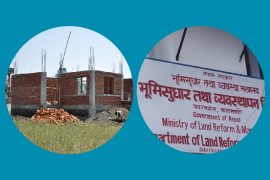Foundation of a house is always connected to the soil, so the foundation of a building needs to be stable and strong. Strength and stability of soil depend on its physical properties. Different properties of each soil can affect the foundation of building differently. The soil will be more stable if it contains more rocks and compact sand/gravel. Soils with good quality for infrastructure have balanced chemistry, so no building material corrosion occurs.
Types of soil
Peat
Peaty soil is generally dark brown or black in colour which is easily compressible because of how much water it can hold. In summer it becomes extremely dry and can even be susceptible to a fire hazard. Peaty soil is very poor subsoil and not ideal for support, as foundations are most stable on soil that does not shift or change the structure. It is an organic soil and is very good for agriculture but not suitable to construct a building.
Clay
Clay soil is stable in its volume unless the water content in it changes. Structural damage may occur if the change in moisture content is relatively rapid (say over a few weeks or months) or if it affects only part of a building. Situations which can cause this include changes in subsurface drainage (such as a water leak from a burst or blocked pipe or drain), localised drying of a soil (due to plant growth or proximity of trees), or a sudden change in the water regime (due to the removal or pruning of a tree which was sheltering the soil and keeping it relatively dry, for example).
Sand
Sand has the largest particles in size and does not hold water. For the foundation of a building, it can be suitable when it is compacted but it can wash away with water. So sometimes sandy soil is suitable to build houses because of their non-water-retaining properties. It is good soil for building structures because it allows water to drain away from a building site but will not shift or move.
Bedrock
Bedrock is a strong rock structure under the soil. Building foundation over bedrock makes the building strong. Rocks are very indestructible and good for supporting foundations because of their solidity and depth. It doesn’t change its shape size in the presence of water and does not slide or move.
Loam
Loam soils generally contain more nutrients, moisture, and humus than sandy soils; they have better drainage and infiltration of water and air than silt and clay-rich soils and are easier to till than clay soils. It is the finest soil type for a strong foundation house. Since this soil is a mixture of organic material, clay and sand, it is good soil for supporting a foundation, as long as no miscellaneous soils find their way onto the surface.
Hope you find this article informative.
Are you in search of a new address to call your home? Search through basobaas.com to find your options.
Thank you for your time and don’t forget to share in your socials!






